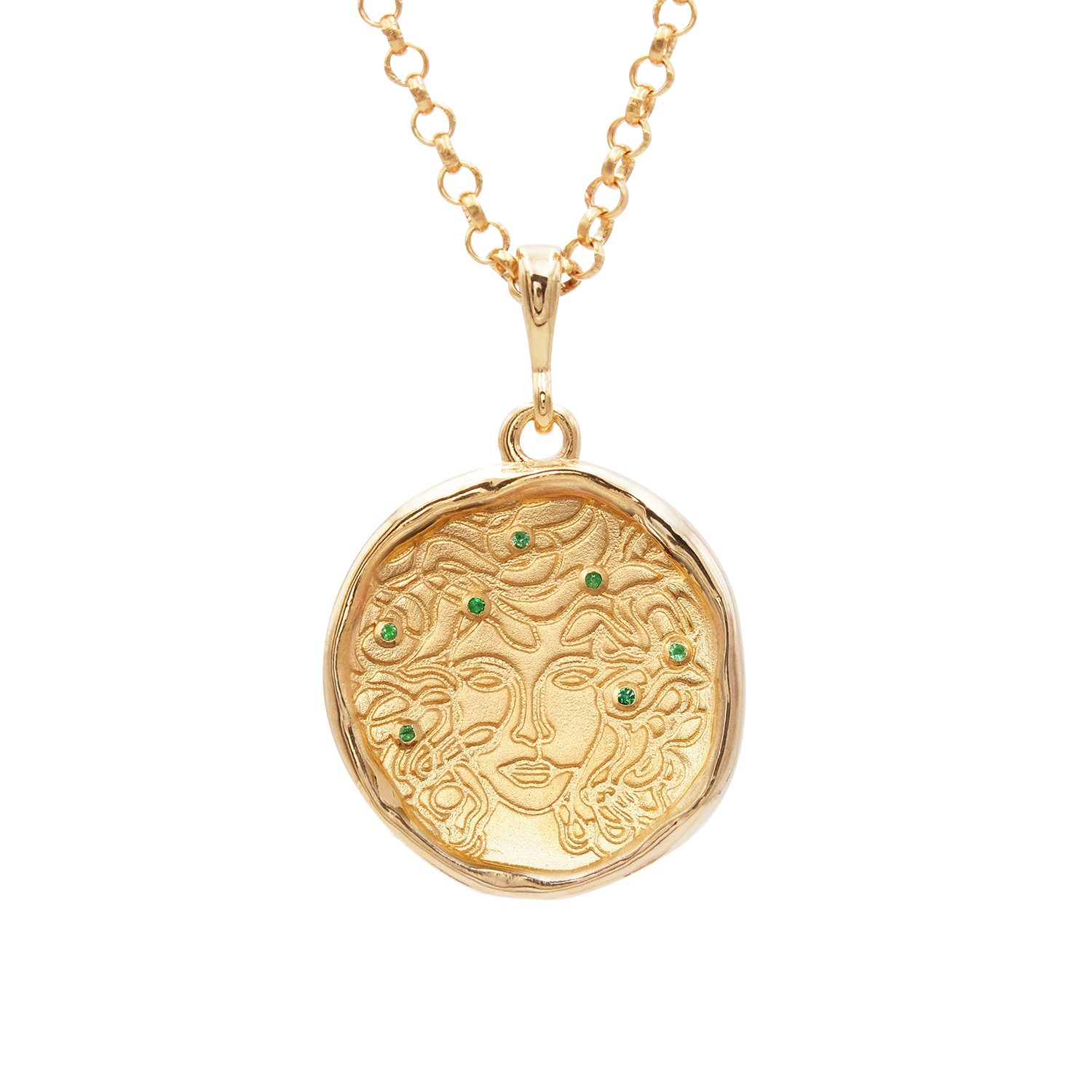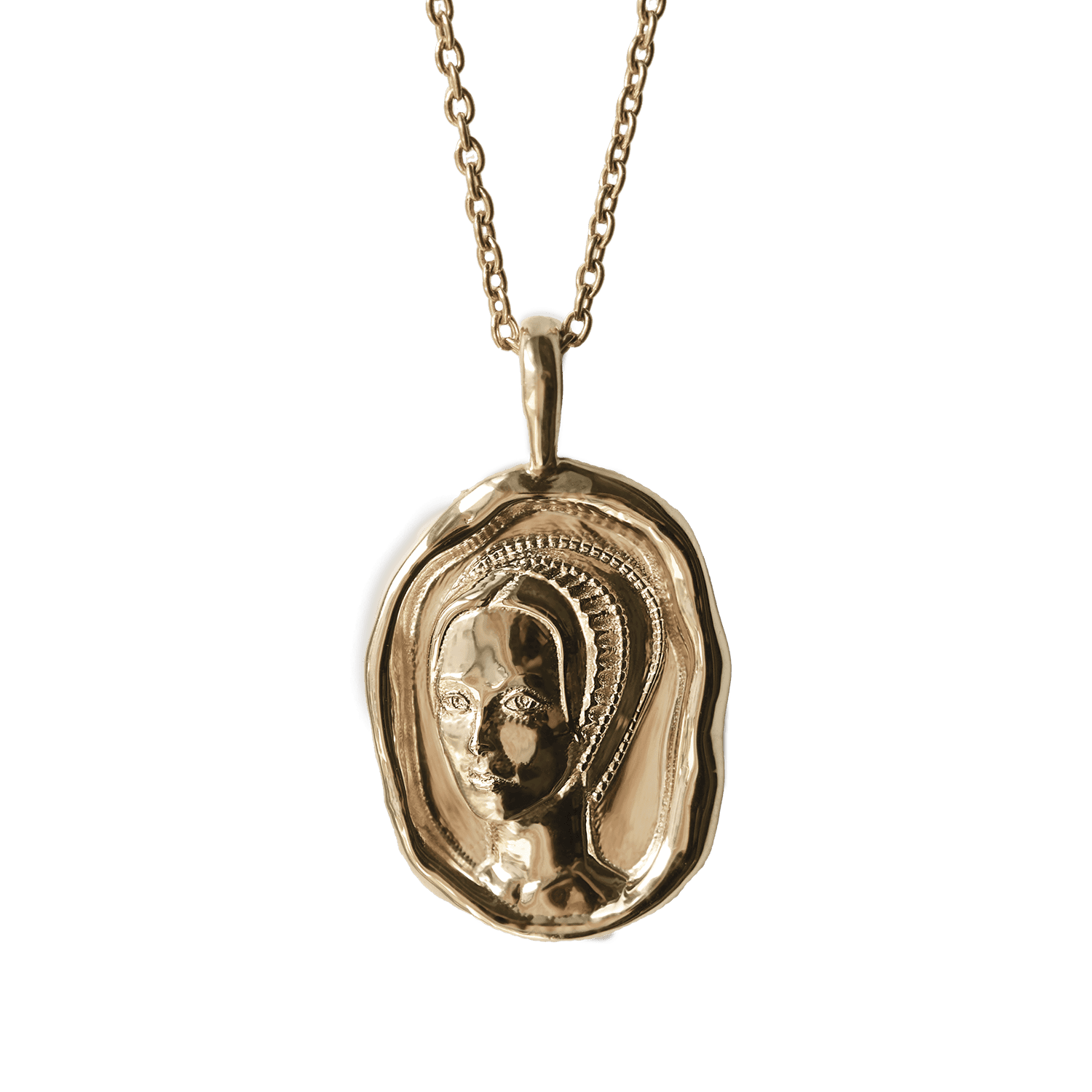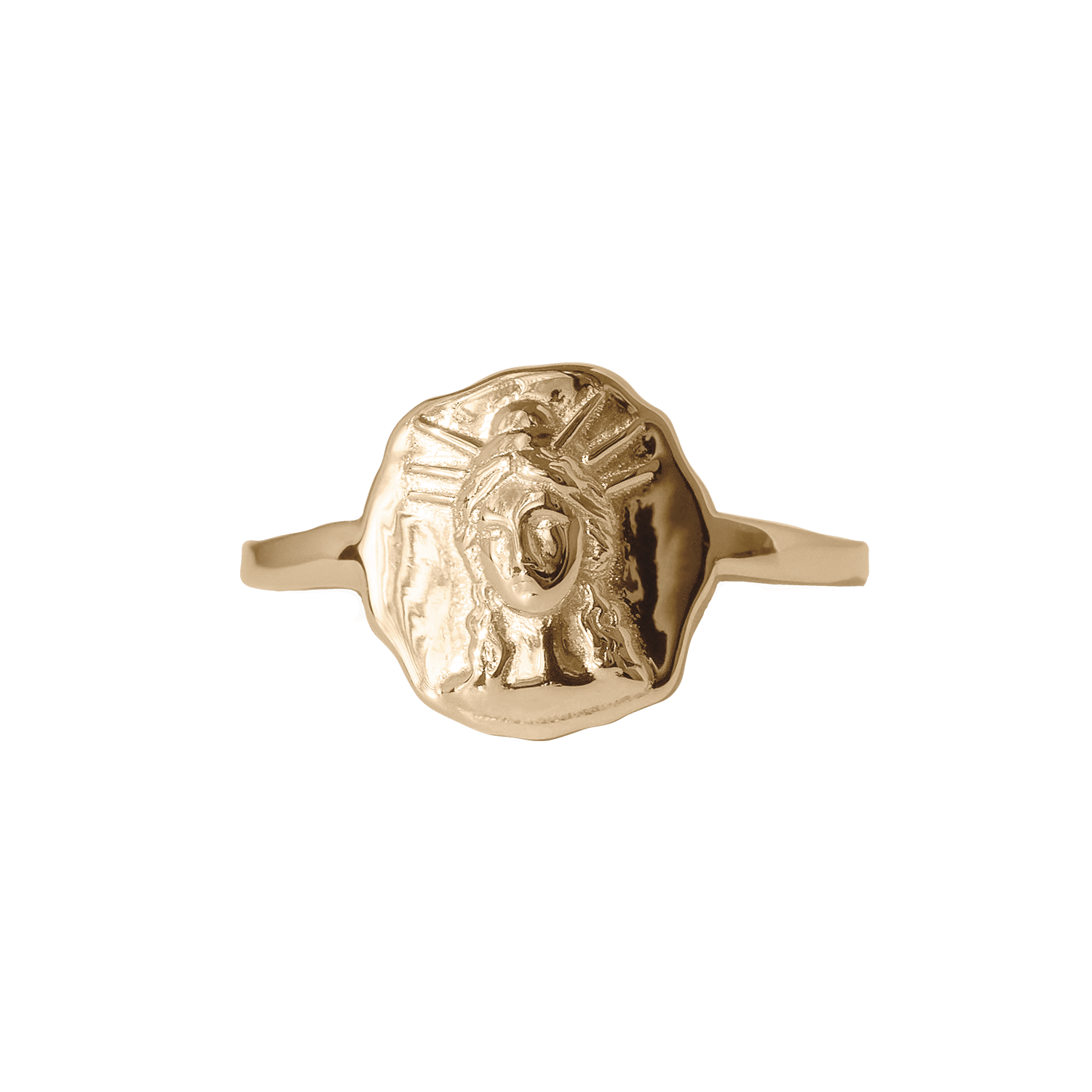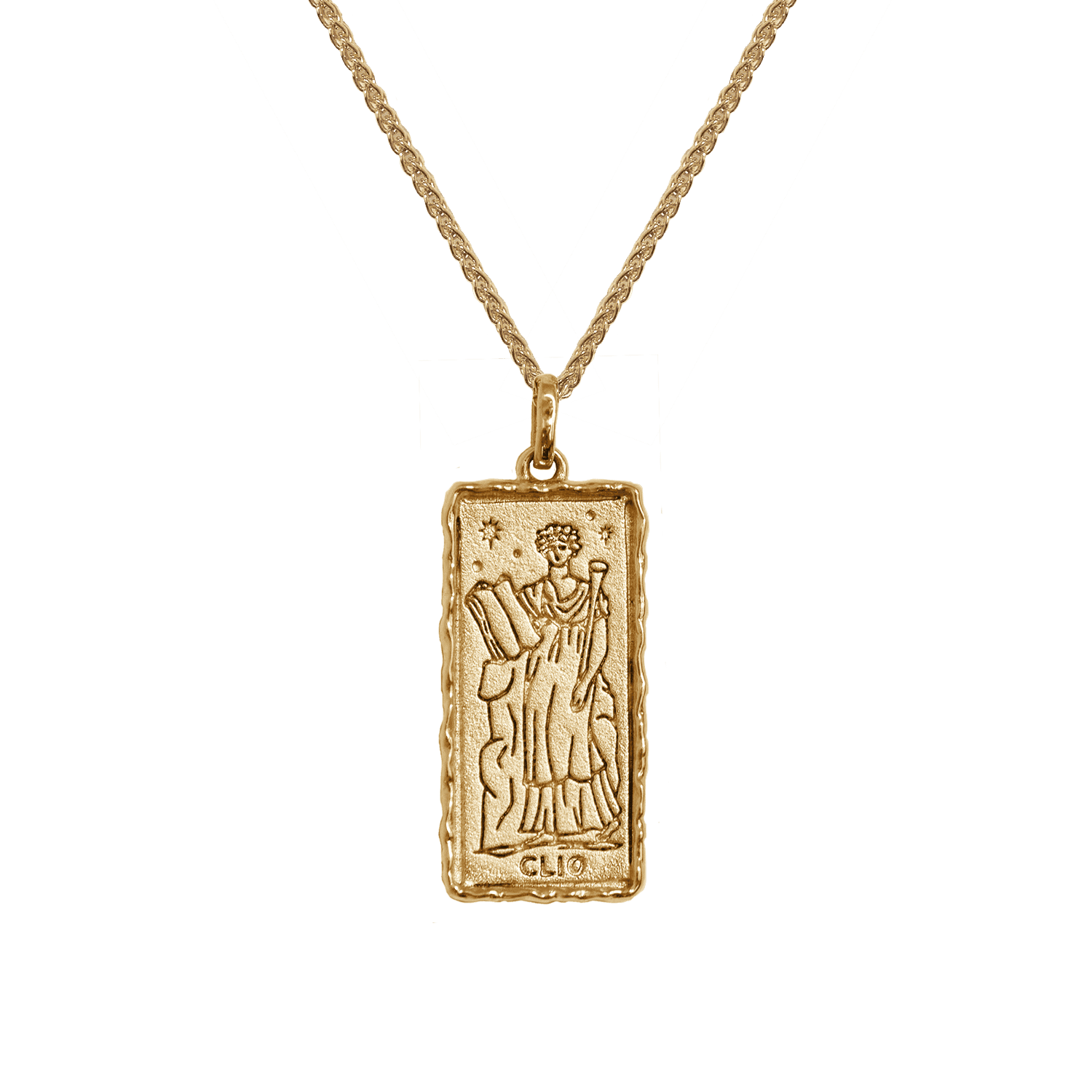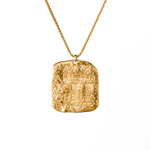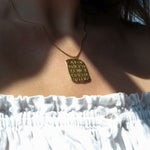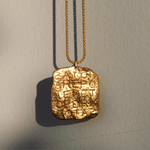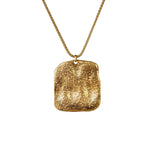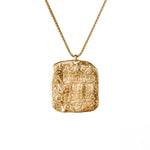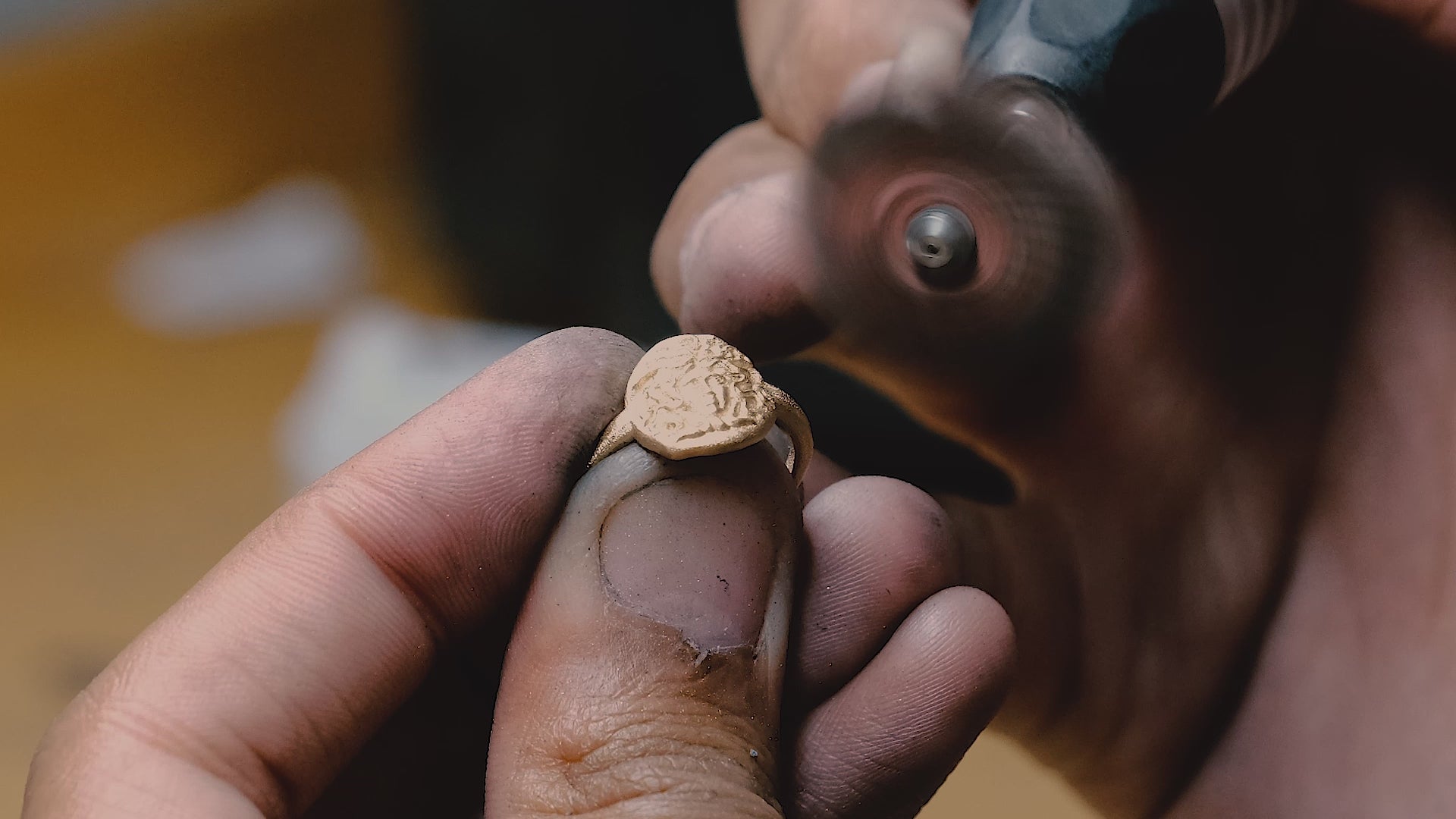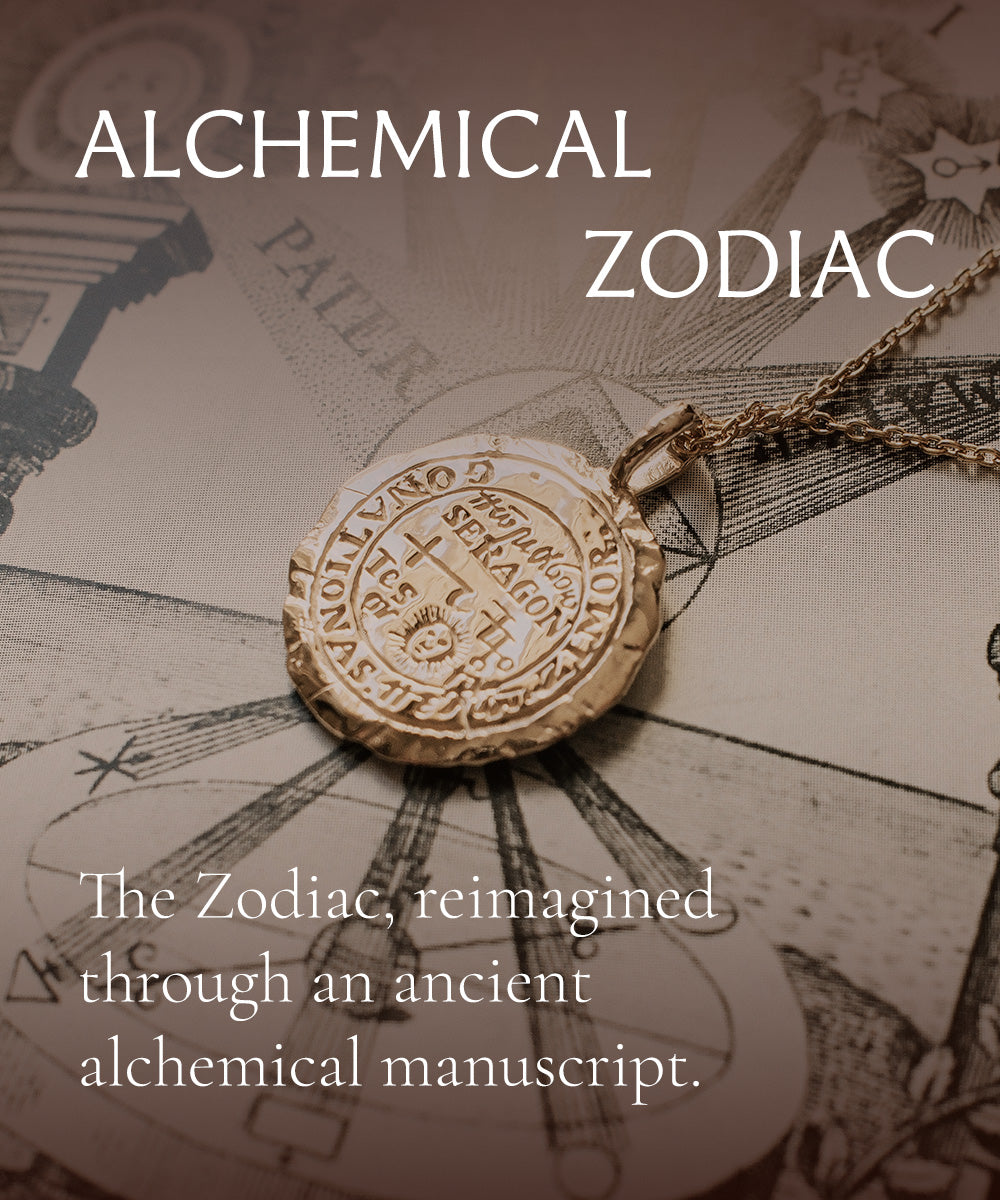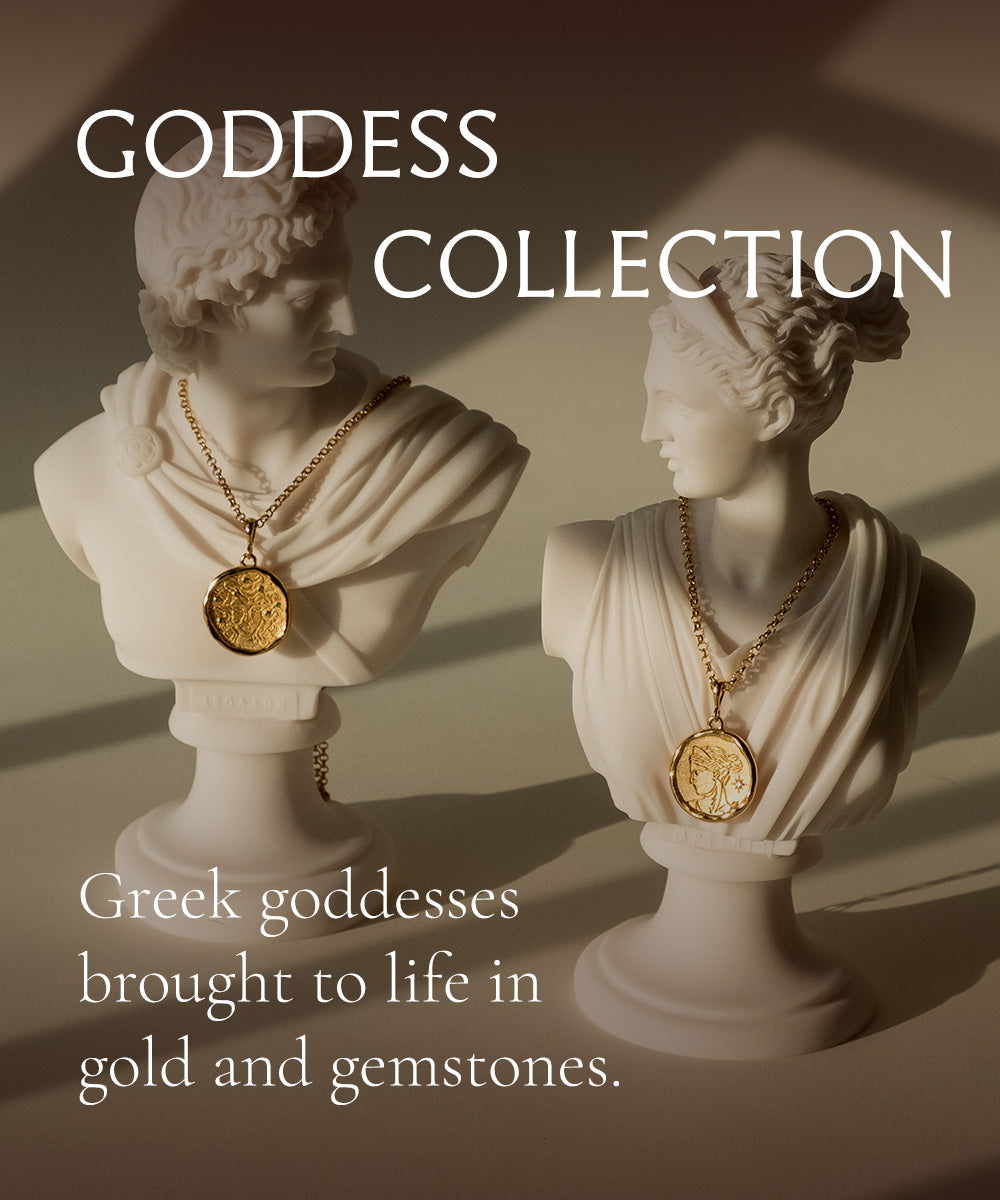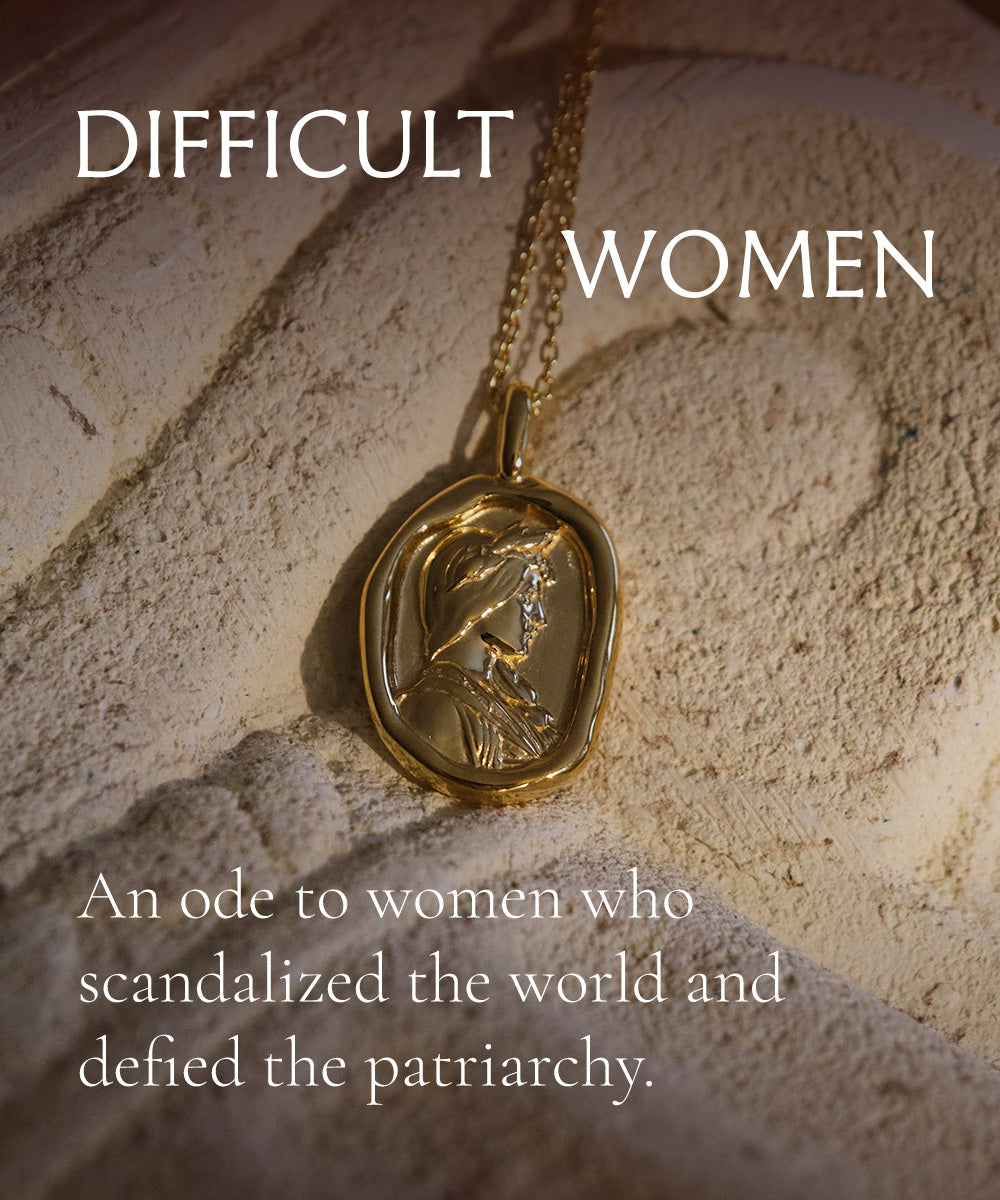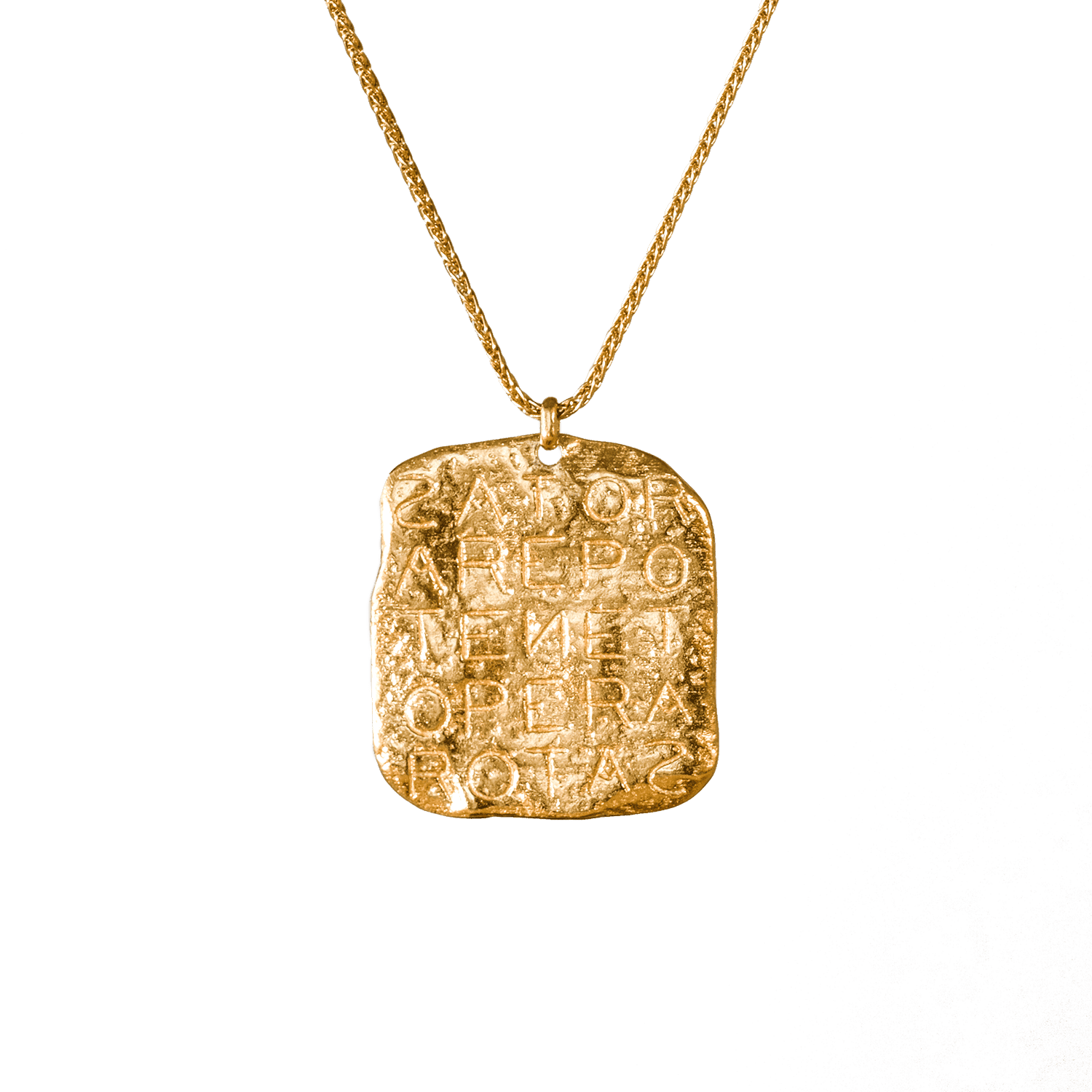
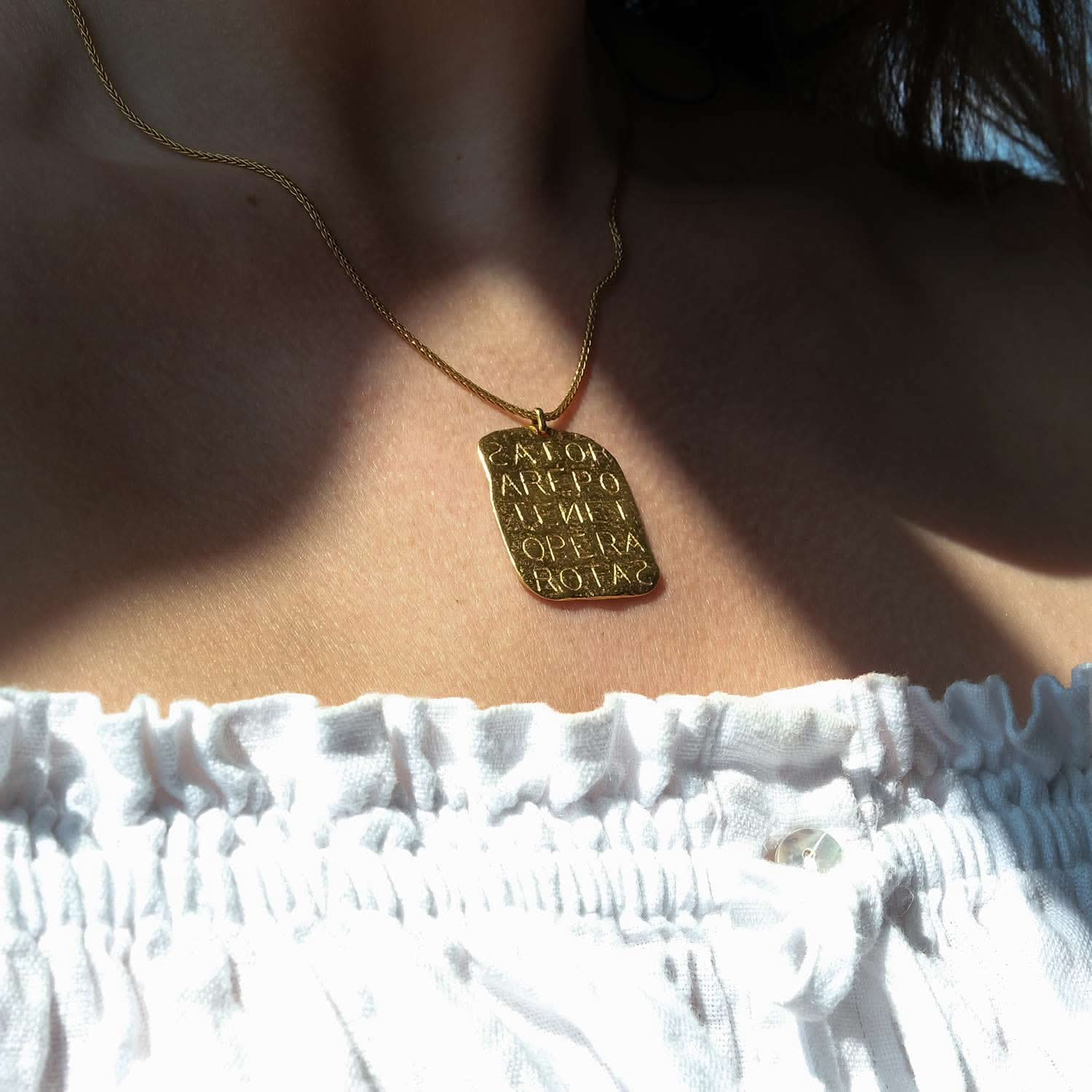
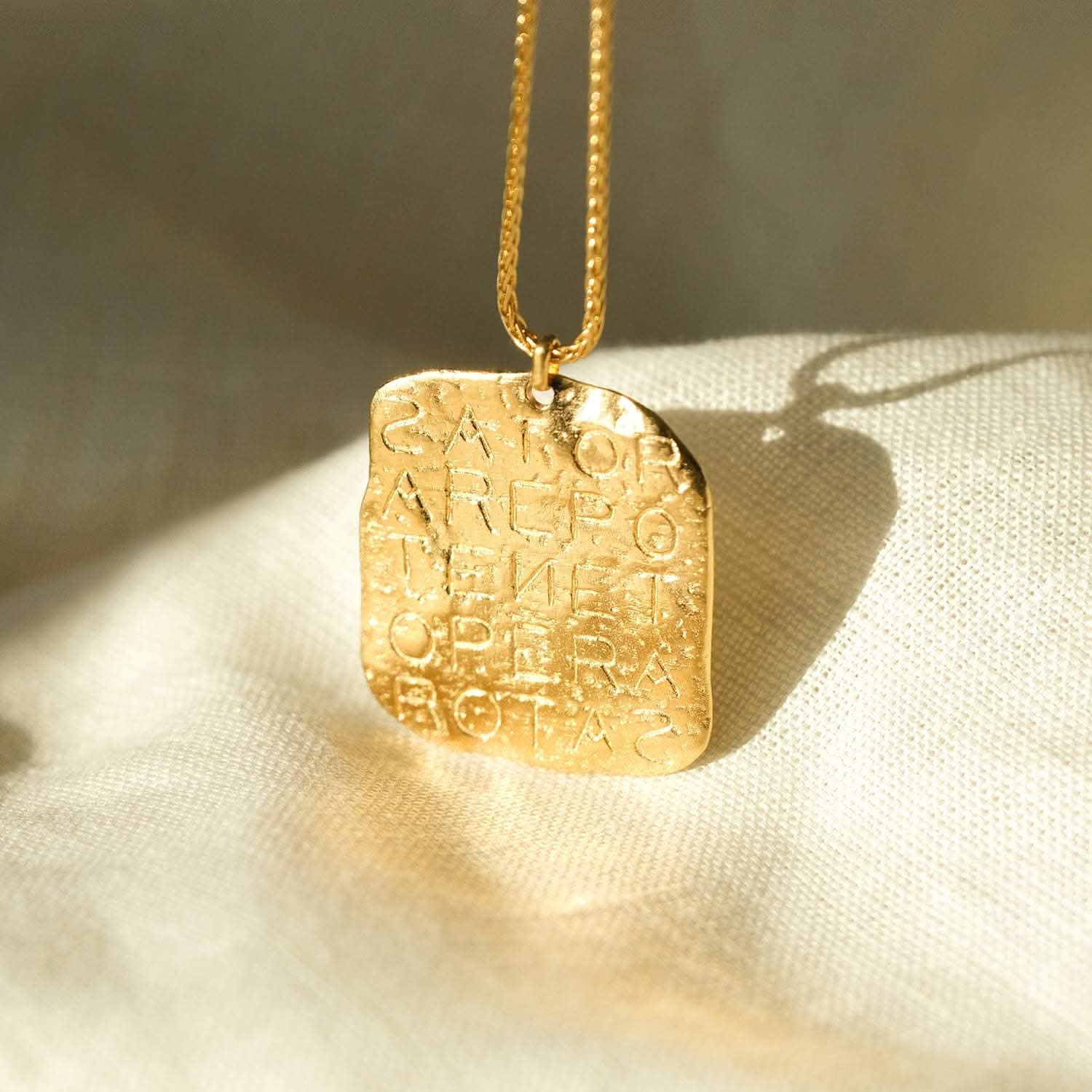
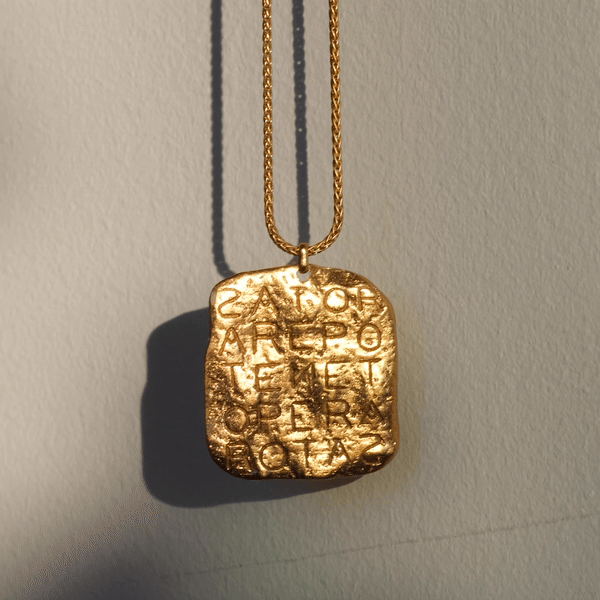

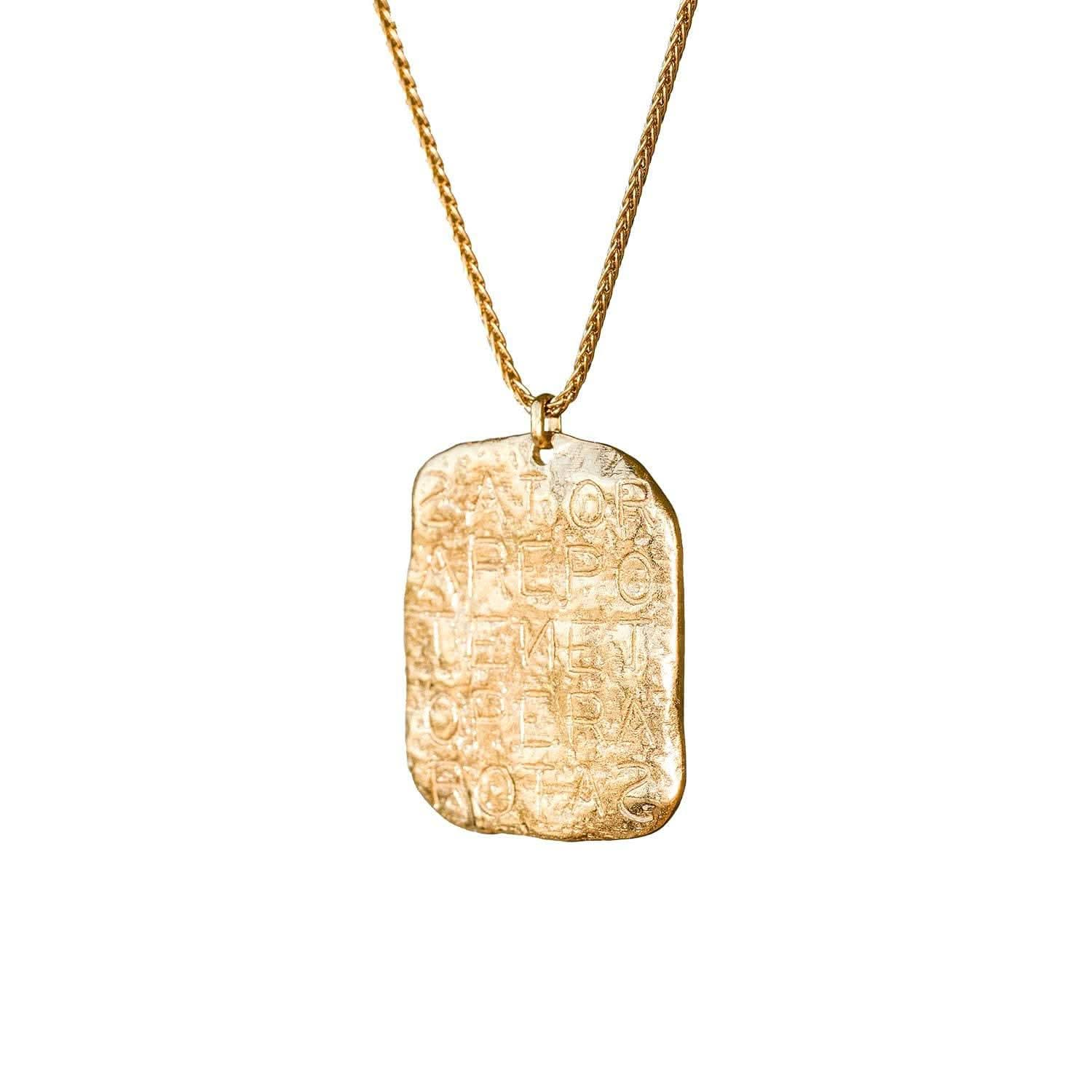


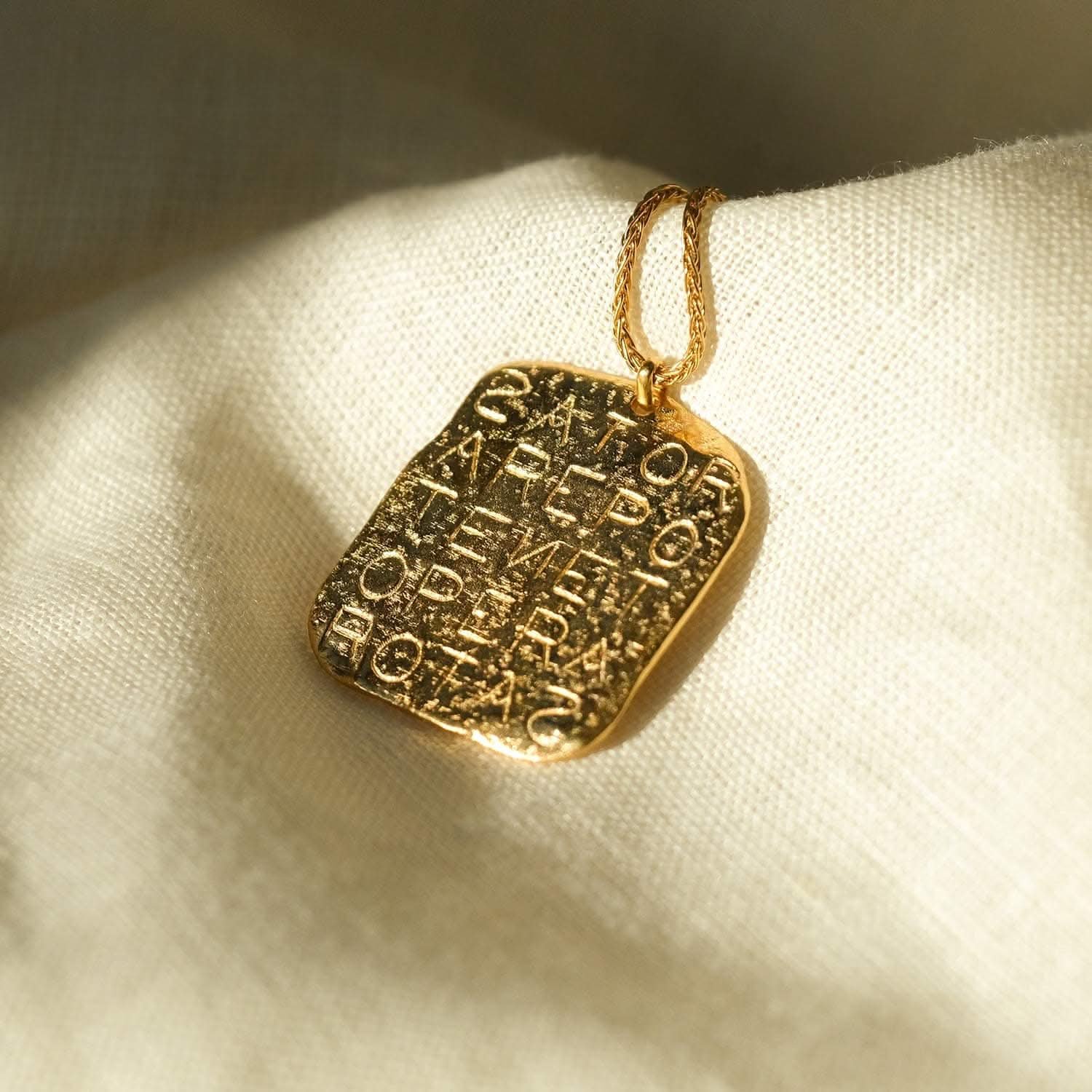
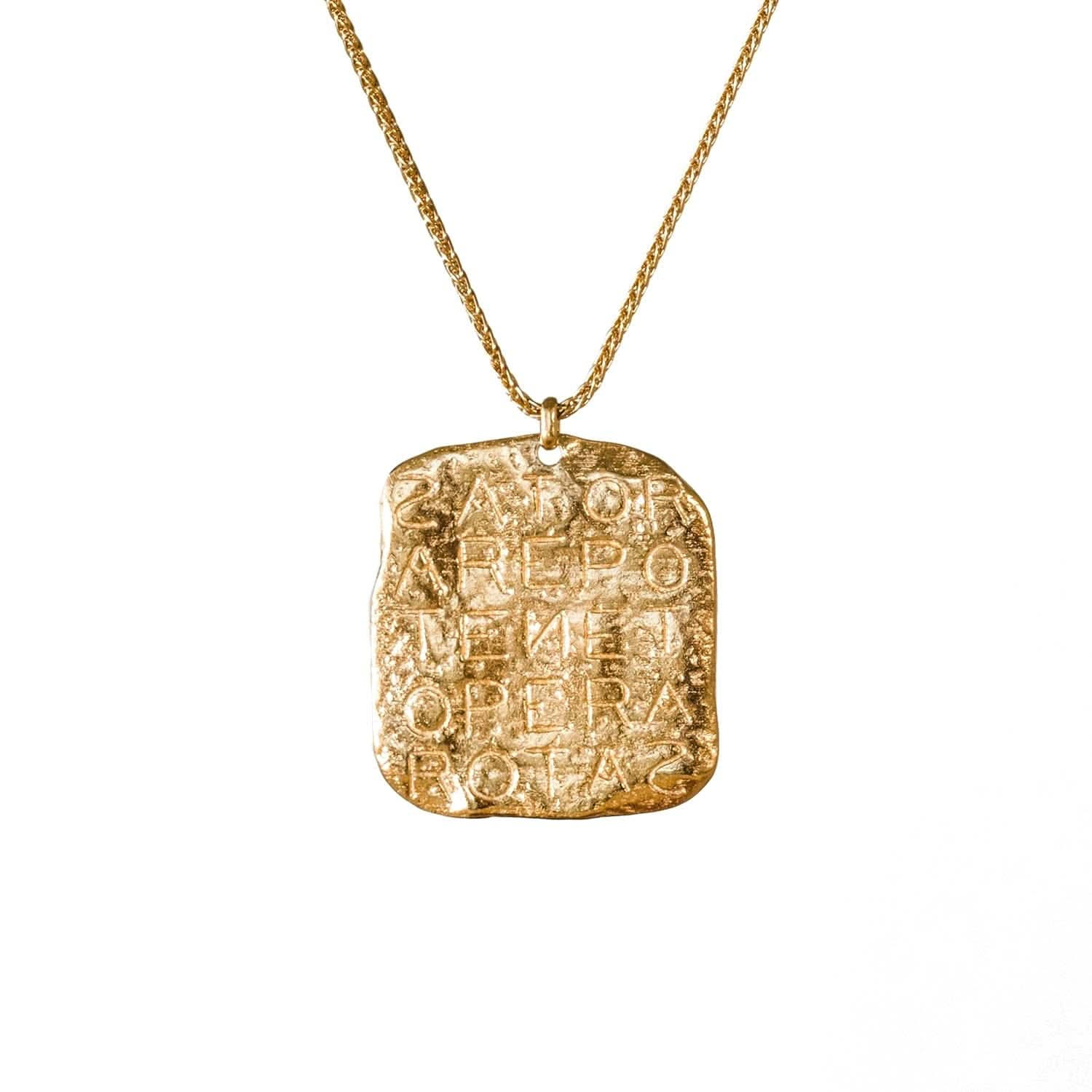
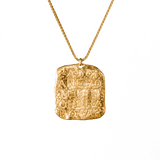


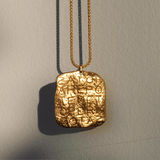



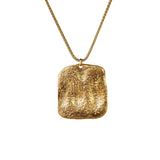

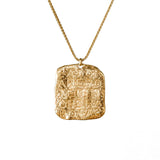
Magic Sator Square Gold Talisman Necklace
NOTE: Made-to-order pieces placed after 12/2 will ship after the holidays. Please check your item is in stock if ordering a gift.
Free global shipping
100% recycled solid gold or vermeil
2 year warranty
Fairly made, fairly priced
The SATOR Square was first discovered in the ruins of Pompeii, dating back to at least 79 BCE and is the earliest 2D palindrome ever recorded - able to be read backwards, forwards, up and down. Modern historians are mystified by the true purpose of the square, but it is believed to have magical uses.
The SATOR Square was often found carved on the walls of ancient houses all over Roman territories as a symbol of protection and a spell to ward off evil spirits and hexes.
The word square contains five latin five-letter words that can all be read backwards and forwards, up and down. The words are: Sator Arepo Tenet Opera Rotas.
The words themselves have perplexed scholars for centuries, especially Arepo, which is not a Latin word, but believed to be a name. Thee most common translation of the square is ‘the farmer/gardener (SATOR) AREPO holds (TENET) and works (OPERA) wheels (ROTAS). (The Gardener Arepo holds and works the wheels/plough). Obviously, this makes little sense, which is why it is believed to have a hidden Roman meaning that has been lost to time.
This necklace is a direct representation of the Sator Square found in Oppède, France. It is cast in solid sterling silver using the lost wax method, then coated in 18k gold.
Details:
25mm x 25mm gold vermeil talisman
Chain length: 20 inches with a jump ring at 18 inches
Chain type: 18k gold vermeil 1mm wheat chain
Complete the look:
Product Details 🔍
Metals:
14k Solid Gold or 18k Gold Vermeil
Dimensions:
25mm x 25mm excluding bail
7 - 7.5 grams
Chain:
If purchasing solid gold pendant, chain will also be 14k solid gold
If purchasing 18k vermeil pendant, chain will also be 18k vermeil
20 inch cable chain with lobster clasp
About Solid Gold ✨
Solid gold is the best option if you:
1. Want to wear your piece forever or pass it down as an heirloom. Solid gold will last for centuries without degrading.
2. Want to invest in jewelry as an asset rather than an accessory. Gold traditionally appreciates in value and can always be melted down and made into a new piece
Unlike many brands, our gold is never hollow - it is always 100% solid, cast using the lost wax method, meaning there is a lot more gold in each piece.
Our gold is 100% certified recycled and each piece is handcrafted here in New York.

About Gold Vermeil
Gold Vermeil, pronounced ver-may, is a french term for a style of gold plating that is regulated by the federal government. Unlike "gold plated" jewelry, vermeil must always be on a solid 925 sterling silver base - rather than brass - with at least 2.5 microns thickness of gold. This is 3 times thicker than normal gold plating.
This makes vermeil a longer lasting product than gold plated jewelry, as well as more valuable because it's composed entirely of precious metals.

When will my piece ship? 🚚
Vermeil: 2 business days
Solid Gold: 2 - 3 weeks
We keep a small inventory of solid gold pieces - please check just above the size/color selector to see if your piece is in stock.
If your solid gold piece is not in stock, please see above for the estimated timeframe to ship.
Magic Sator Square Gold Talisman Necklace
- Related products
- Recently viewed

FEATURED BLOG
How We Price Our Gold Jewelry
People are always curious about how jewelry companies price their pieces - how can that tiny little piece be worth $3000? I was one of those skeptical people until I founded...
